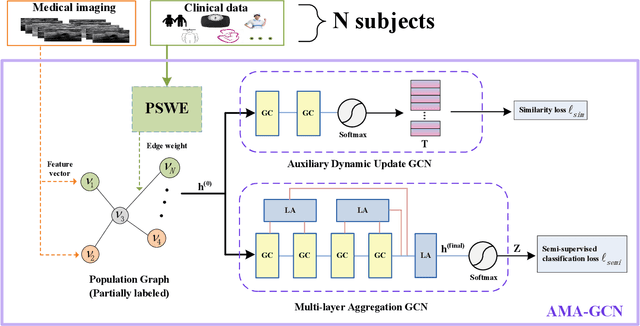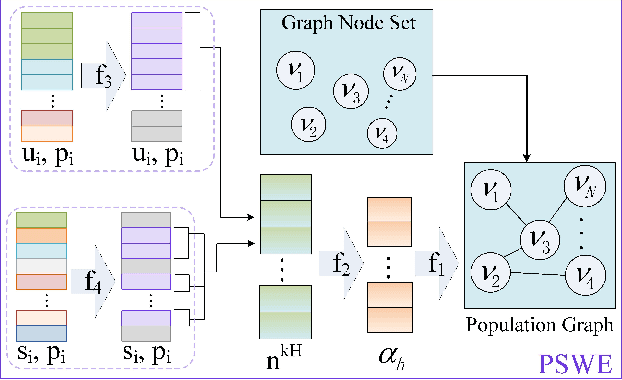Ling Ma
AMA-GCN: Adaptive Multi-layer Aggregation Graph Convolutional Network for Disease Prediction
Jun 16, 2021



Abstract:Recently, Graph Convolutional Networks (GCNs) have proven to be a powerful mean for Computer Aided Diagnosis (CADx). This approach requires building a population graph to aggregate structural information, where the graph adjacency matrix represents the relationship between nodes. Until now, this adjacency matrix is usually defined manually based on phenotypic information. In this paper, we propose an encoder that automatically selects the appropriate phenotypic measures according to their spatial distribution, and uses the text similarity awareness mechanism to calculate the edge weights between nodes. The encoder can automatically construct the population graph using phenotypic measures which have a positive impact on the final results, and further realizes the fusion of multimodal information. In addition, a novel graph convolution network architecture using multi-layer aggregation mechanism is proposed. The structure can obtain deep structure information while suppressing over-smooth, and increase the similarity between the same type of nodes. Experimental results on two databases show that our method can significantly improve the diagnostic accuracy for Autism spectrum disorder and breast cancer, indicating its universality in leveraging multimodal data for disease prediction.
Contraction Mapping of Feature Norms for Classifier Learning on the Data with Different Quality
Jul 28, 2020



Abstract:The popular softmax loss and its recent extensions have achieved great success in the deep learning-based image classification. However, the data for training image classifiers usually has different quality. Ignoring such problem, the correct classification of low quality data is hard to be solved. In this paper, we discover the positive correlation between the feature norm of an image and its quality through careful experiments on various applications and various deep neural networks. Based on this finding, we propose a contraction mapping function to compress the range of feature norms of training images according to their quality and embed this contraction mapping function into softmax loss or its extensions to produce novel learning objectives. The experiments on various classification applications, including handwritten digit recognition, lung nodule classification, face verification and face recognition, demonstrate that the proposed approach is promising to effectively deal with the problem of learning on the data with different quality and leads to the significant and stable improvements in the classification accuracy.
 Add to Chrome
Add to Chrome Add to Firefox
Add to Firefox Add to Edge
Add to Edge